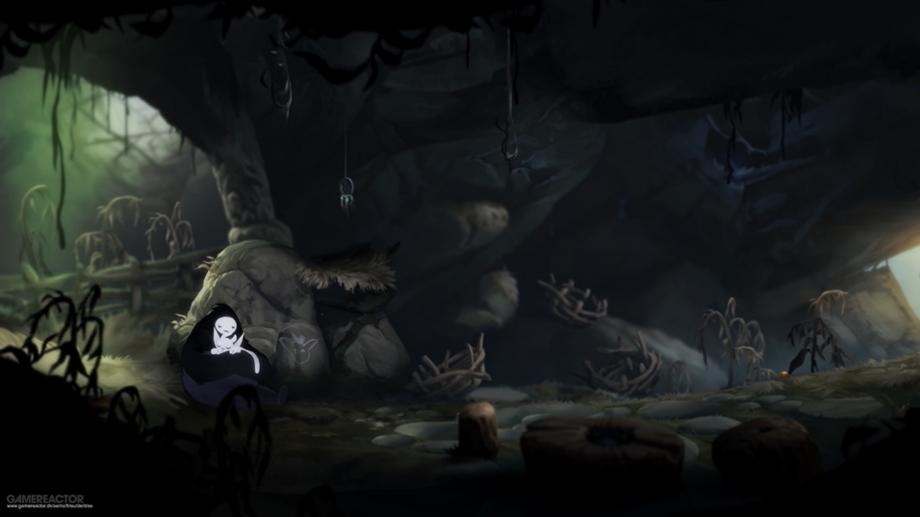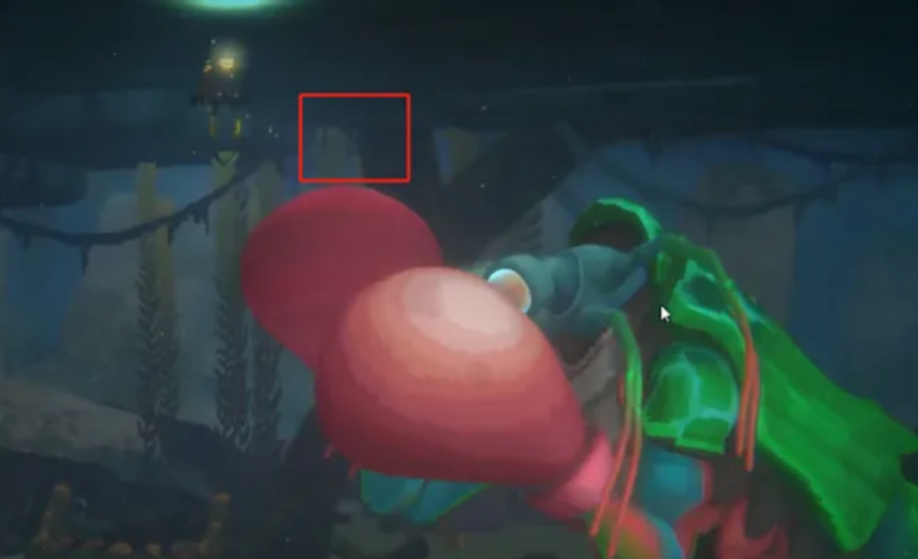1. Introduction
Game development has seen huge technological progress and design changes in recent decades. The way games look has changed from simple 2D graphics to the complex 3D worlds we have today. Throughout this process, the growth of 2D and 3D technologies has dramatically affected the gaming industry. At first, 2D games were favored because of their simple design and charming animations. However, as players wanted more immersion and better visuals, 3D technology became more common since it could show realistic effects and handle more complex game worlds [1]. In video games, the shift from 2D to 3D is an essential step in computer graphics. 2D graphic technology started in the early days of computer graphics, using images and sprites on a flat surface. Classic 2D games include Pac-Man and Snake. As technology improved, 2D games started having better graphics and animations. For example, Super Mario Bros used scrolling technology and detailed pixel art to push the limits of 2D visuals [2]. The arrival of 3D graphics was a big step forward for computer graphics. In the mid-1990s, the development of GPUs and real-time rendering made 3D games like Doom and Half-Life popular [3]. These games offered a more immersive visual experience than 2D games by using 3D models and perspective projection.
We can see how technology and design ideas have changed with the development of 2D and 3D technologies. Recently, game developers have started finding new ways to mix 2D and 3D technologies to use both strengths. Combining these two improves traditional game graphics, letting developers keep the classic 2D style while using 3D technology to add more depth and movement to the game. This mix helps developers be more creative and brings more variety to game design, giving players fresh gaming experiences [4]. As a result, this approach has become more popular and accepted in recent years, especially in indie and some mainstream games. For instance, Octopath Traveler uses 2D-pixel characters in 3D environments to create HD 2D gameplay with clear, high-quality visuals. This style creates a visual effect that feels both nostalgic and modern. This trend shows how the gaming industry looks for new ways to improve visuals and rethink traditional game art. Developers have found that combining 2D and 3D technologies lets them go beyond the limits of just one style and make games with a unique look and feel [5]. As technology moves forward, this combined approach will likely become an essential trend in future game design, helping to improve how games look and feel.
Learning how to mix 2D and 3D in new ways will be a key skill for game developers in the highly competitive global market. This study not only looks at current trends in game development but also offers developers ideas and strategies for using these techniques in real projects. This paper examines how 2D and 3D technologies are combined in game design and their use, looking at how this mix helps improve visuals and gameplay experiences.
2. Application of 2D and 3D in game
One main problem with 2D graphics is the need for more depth and space, which limits how well the game world can be shown. In 2D games, the viewpoint is usually fixed, meaning you can't control the camera freely or get dynamic perspective effects. This makes 2D graphics less effective in certain game types, like those that need complex environmental interactions. For example, in a typical 2D side-scrolling platformer like Super Mario Bros., the player controls the character across a 2D plane, shown from a side view. All the game elements, such as characters, obstacles, enemies, and backgrounds, are drawn on this 2D plane. Since there is no real 3D space, there’s no depth in the visual display. The way elements appear closer or further away is only shown by their position on the screen, which doesn't fully show the sense of distance and depth like in the real world.
Unlike 2D images, 3D images are created using 3D modeling and rendering techniques. The core of 3D graphics creation is polygon modeling, which involves building shapes in 3D space and applying textures and lighting effects on their surfaces. Every 3D object comprises polygons (usually triangles) that define the shape and structure using vertex coordinates. 3D rendering engines use this data to create the final image and make it more realistic with effects like lighting, shadows, and reflections. Modern 3D rendering also uses techniques like real-time ray tracing to create more lifelike lighting effects.
2.5D technology was developed to maintain the visual style of 2D. This technology solves the problem of traditional 2D graphics lacking space and depth by adding 3D elements to 2D images. 2.5D games create a more layered visual experience by using 3D effects, such as parallax, light and shadow, and perspective. This technique has been used in games like Ori and the Blind Forest (Figure 1).

Figure 1. “Ori and the Blind Forest”[6]
In this game, the background and foreground are scrolled in several layers to give a strong sense of depth. While the main characters and interactive objects are still shown using 2D sprites, these sprites move in a 3D space with depth. The background is split into different layers, with the closest one moving the fastest and the furthest one moving the slowest, which creates a realistic parallax effect [6]. By using parallax scrolling, the game not only shows the distance between objects but also adds visual depth. As the player controls the character to jump and climb, the changing foreground and background layers make the scene more spaced and layered. 2.5D technology simulates an environment with depth using fake 3D effects like parallax scrolling and simple perspective projection. These techniques let objects on a 2D plane appear to move and change in a 3D space. For example, the different movement speeds of foreground and background elements help the player see how close or far objects are and feel a sense of depth [7]. Also, lighting and shadows make flat images seem three-dimensional, making the scene more realistic and layered. Together, these techniques help 2.5D fix the problem of a lack of depth and space in 2D images, creating a more immersive gaming experience.
The use of 2.5D technology improves the visuals and gives game developers more design freedom and room for creativity. Developers can change the mix of 2D and 3D elements to achieve specific artistic effects or solve performance issues. This flexibility has made 2.5D technology more popular in modern game development, especially in projects that need a balance between how the game looks and how well it performs.
3. Challenges in combining 2D and 3D
3.1. Physics engines and collision detection
Combining 2D and 3D technologies brings many technical problems, especially in physics engines and collision detection on different platforms. Since 2D and 3D technologies work in different planes, developers need to make sure that 2D characters and 3D characters or objects interact well, so that the game doesn’t feel disconnected. For example, it can be a problem if a player clearly hits an enemy, but no damage happens. As game development moves more towards multi-platform and cross-platform environments, developers need to find a way to balance 2D and 3D graphics, considering differences in performance, graphic processing power, and compatibility across different devices.
For example, the indie game Dave the Diver, released in 2023, sold over four million copies on different platforms in its first year (Figure 2). This game successfully mixes 2D and 3D technologies but had challenges in some features.

Figure 2. “Dave the Diver” [8]
As shown in the picture, the enemies are on the right side of the screen while the player is in the upper left. In the game, the player should take damage and lose health if they touch the enemy's fists. But during development, it was found that when the mantis shrimp enemy hit Dave with its fist, Dave didn’t take any damage. The problem happened because the mantis shrimp’s fist was behind the plane where Dave was. Even though it looked like the fist hit Dave, it didn’t trigger the collision detection. To fix this, the Z value of the back collider can be changed to line it up with the plane where Dave is, so both will be on the same plane, and Dave will take damage from the attack. But this solution also creates new issues. The game uses a converging camera instead of a parallel view, so objects on different planes look like they are at different distances. If the fist is behind Dave, it will look smaller, but the collider’s size is based on the actual fist, which makes the size of the collider and the model different. To fix this, developers need to calculate how the fist’s size changes based on Dave’s plane and adjust the collider size to match. This way, the game will work correctly when played.
3.2. Lighting and shadow processing
In 2D technology, lighting and shadows are mainly shown through artistic drawing. Developers need to show the light source using color differences and static shadows. But the problem with this is that there is no support for dynamic lighting, which can cause differences in the look of the game when characters or environments move, making it less realistic. Also, 2D games usually have simple scenes, which makes it hard to create a rich and dynamic experience. Designers often have to choose between keeping the artistic style or making the lighting and shadows look more real.
On the other hand, 3D technology allows developers to create more complicated and realistic lighting and shadow effects, but it has the big challenge of needing a lot of computing power. Real-time lighting and shadow calculations need strong hardware, especially for high-quality shadows, which can slow down the game and affect how smoothly it runs. Besides, 3D lighting models are hard to manage. Developers have to figure out how to adjust lighting for different environments and materials to make sure the visuals are consistent and look good. Finding the right balance between lighting quality and performance is always a challenge.
Both 2D and 3D technologies have problems with device compatibility. While 2D games usually work well on devices with lower specs, 3D games that use high-quality lighting and shadows often need more powerful hardware. This can stop some players from playing these games smoothly. The need for better hardware not only limits the audience for 3D games but also makes developers think about how to balance visual effects with device compatibility. When combining 2D and 3D technologies, developers have to face the challenge of mixing both styles in a way that looks good. Blending 2D art with 3D lighting effects and keeping the overall look consistent is hard. Developers must find the best way to balance technical and artistic aspects to create games that are visually interesting and immersive.
4. Conclusion
This paper has explored the use and combination of 2D and 3D technologies in modern game development, showing how this mix has made big changes to the way games look and how players experience them. Through different examples, we have shown how 2.5D technology can create a special gaming experience by combining the artistic style of 2D with the visual depth of 3D. This technology not only makes games look better but also makes the gameplay more immersive for players. From a technical perspective, the paper talked about the challenges of mixing 2D and 3D technologies across different platforms, such as how to adjust physics engines and make collision detection more accurate. Even though these challenges exist, creative solutions and constant improvements in technology show that these problems can be solved. For example, by adjusting the Z-values and the size of collision bodies, developers can make sure that 2D and 3D elements work well together both visually and in gameplay.
Looking to the future, as graphics technology gets better and development tools improve, combining 2D and 3D technologies is likely to become common in game design. This mix will not only help improve how games look but also give players a richer and more varied gaming experience. Game developers need to keep exploring and practicing to fully use the potential of this combination, making games that are more creative and attractive.
References
[1]. Purcell, T. J., Buck, I., Mark, W. R., & Hanrahan, P. (2002). Ray tracing on programmable graphics hardware. ACM Transactions on Graphics, 21(3), 703-712.
[2]. Foley, J. D., van Dam, A., Feiner, S. K., & Hughes, J. F. (1996). Computer Graphics: Principles and Practice. Addison-Wesley.
[3]. Purdy, S. (2011). The Impact of 3D Graphics on Game Design. Journal of Game Development, 4(2), 75-89.
[4]. Shea, B. (2016). The Aesthetics of Indie Games: An Analysis of Imagination, Creativity, and Innovation in Independent Game Design. Journal of Games Criticism, 3(1).
[5]. Gao, Y., & Zhang, T. (2022). Integrating 2D and 3D Graphics: Trends and Innovations. International Journal of Game Design, 15(3), 45-60.
[6]. Moon Studios. (2015). Ori and the Blind Forest. [Game Documentation]. Retrieved from Moon Studios Website.
[7]. Chen, W. (2004). Pseudo-3D Techniques in Game Design. Journal of Interactive Media in Education, 7(2), 45-60.
[8]. Koei. (2006). Romance of the Three Kingdoms XI. [Game Documentation]. Retrieved from Koei Website.
Cite this article
Wang,M. (2024). Integrating 2D and 3D in Game Development: Design and Technology Collaboration. Applied and Computational Engineering,110,170-174.
Data availability
The datasets used and/or analyzed during the current study will be available from the authors upon reasonable request.
Disclaimer/Publisher's Note
The statements, opinions and data contained in all publications are solely those of the individual author(s) and contributor(s) and not of EWA Publishing and/or the editor(s). EWA Publishing and/or the editor(s) disclaim responsibility for any injury to people or property resulting from any ideas, methods, instructions or products referred to in the content.
About volume
Volume title: Proceedings of CONF-MLA 2024 Workshop: Securing the Future: Empowering Cyber Defense with Machine Learning and Deep Learning
© 2024 by the author(s). Licensee EWA Publishing, Oxford, UK. This article is an open access article distributed under the terms and
conditions of the Creative Commons Attribution (CC BY) license. Authors who
publish this series agree to the following terms:
1. Authors retain copyright and grant the series right of first publication with the work simultaneously licensed under a Creative Commons
Attribution License that allows others to share the work with an acknowledgment of the work's authorship and initial publication in this
series.
2. Authors are able to enter into separate, additional contractual arrangements for the non-exclusive distribution of the series's published
version of the work (e.g., post it to an institutional repository or publish it in a book), with an acknowledgment of its initial
publication in this series.
3. Authors are permitted and encouraged to post their work online (e.g., in institutional repositories or on their website) prior to and
during the submission process, as it can lead to productive exchanges, as well as earlier and greater citation of published work (See
Open access policy for details).
References
[1]. Purcell, T. J., Buck, I., Mark, W. R., & Hanrahan, P. (2002). Ray tracing on programmable graphics hardware. ACM Transactions on Graphics, 21(3), 703-712.
[2]. Foley, J. D., van Dam, A., Feiner, S. K., & Hughes, J. F. (1996). Computer Graphics: Principles and Practice. Addison-Wesley.
[3]. Purdy, S. (2011). The Impact of 3D Graphics on Game Design. Journal of Game Development, 4(2), 75-89.
[4]. Shea, B. (2016). The Aesthetics of Indie Games: An Analysis of Imagination, Creativity, and Innovation in Independent Game Design. Journal of Games Criticism, 3(1).
[5]. Gao, Y., & Zhang, T. (2022). Integrating 2D and 3D Graphics: Trends and Innovations. International Journal of Game Design, 15(3), 45-60.
[6]. Moon Studios. (2015). Ori and the Blind Forest. [Game Documentation]. Retrieved from Moon Studios Website.
[7]. Chen, W. (2004). Pseudo-3D Techniques in Game Design. Journal of Interactive Media in Education, 7(2), 45-60.
[8]. Koei. (2006). Romance of the Three Kingdoms XI. [Game Documentation]. Retrieved from Koei Website.









